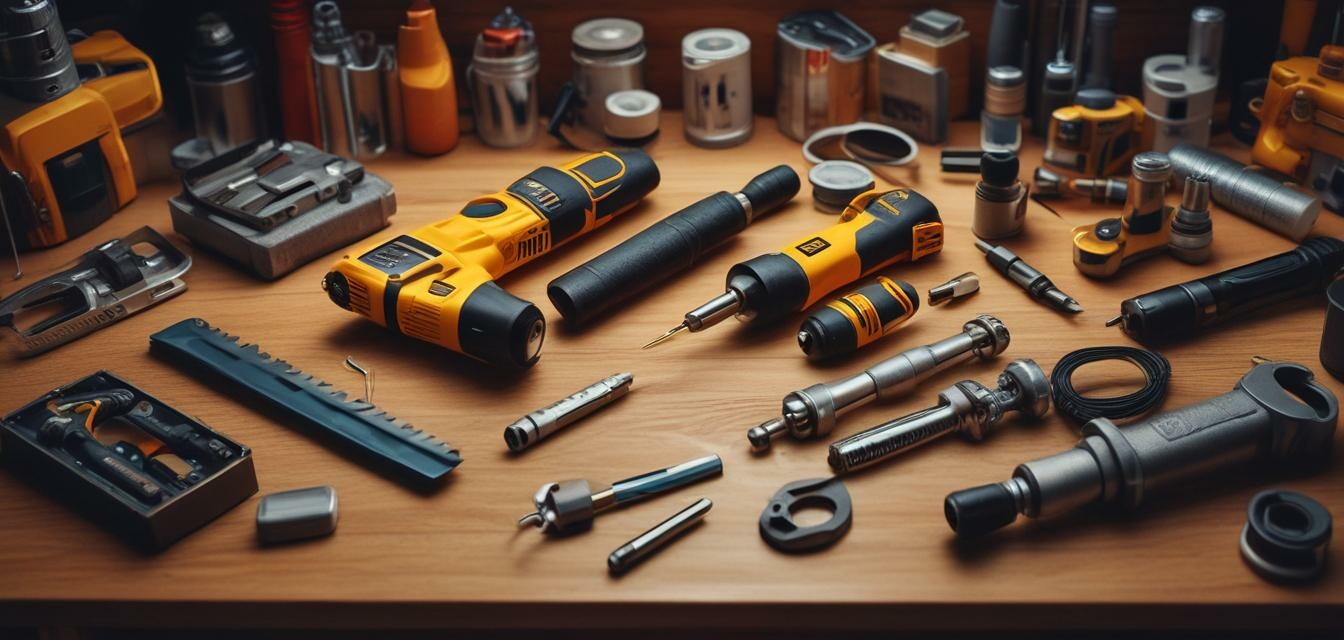
Using Portable Tools for Home Improvement Projects
- Portable tools are essential for DIY home improvement projects.
- Knowing which tools to use will enhance efficiency and results.
- Prioritizing safety and maintenance will prolong tool life.
- Begin with basic tools and expand your collection as needed.
Home improvement projects can be both rewarding and challenging. Whether you are a contractor or a DIY enthusiast, having the right tools can make a significant difference in the outcome of your project. This guide will provide you with effective ways to utilize various portable tools for a successful home improvement experience.
Understanding Portable Tools
Portable tools are designed for easy transportation and maneuverability, making them perfect for home improvement projects that require flexibility. Below is a list of common types of portable power tools that can make your projects easier:
- Angle grinders: Useful for cutting, grinding, and polishing various materials.
- Cordless drills: Essential for drilling holes and driving screws in different surfaces.
- Impact drivers: Ideal for driving screws with high torque.
- Multi-tools: Versatile tools that can perform many functions, including cutting and sanding.
- Portable saws: Perfect for making precise cuts in wood and other materials.
- Sanders: Used to smooth surfaces and prepare them for finishing.
Choosing the Right Portable Tools for Your Project
Selection of tools can vary based on the project type. Here’s a table comparing specific tasks with suitable portable tools:
| Task | Recommended Portable Tool |
|---|---|
| Assembling furniture | Cordless drill |
| Cutting tiles | Angle grinder |
| Sanding wood surfaces | Sander |
| Hanging shelves | Impact driver |
| Creating decorative edges | Multi-tool |
Getting Started with Portable Tools
Before diving into your home improvement project, it's essential to have a clear plan and the right tools at hand. Here are some steps to get started:
- Identify your project needs: Understand what tasks you will perform and what tools will help.
- Gather your tools: Collect portable tools that align with your project requirements.
- Set up a workspace: Create a clean, organized space to work efficiently.
- Read instructions: Familiarize yourself with how to use each tool safely.
Beginner Tips for Using Portable Tools
- Always wear safety gear, including goggles and gloves.
- Prioritize tool maintenance for longevity and performance.
- Practice with tools on scrap materials before starting your project.
- Take breaks to avoid fatigue—working carefully will yield better results.
- Don't hesitate to seek help or watch instructional videos if you're uncertain.
Safety First: Handling Your Portable Tools
Safety should always be your top priority when using power tools. Here are some general safety tips to keep in mind:
- Keep your work area clean and clutter-free.
- Store tools in a designated area when not in use.
- Ensure electrical connections are secure and undamaged.
- Never bypass safety features of your tools.
Maintaining Your Portable Tools
Proper maintenance is crucial for extending the life of your portable tools. Follow these maintenance tips:
- Clean tools after every use to remove sawdust and debris.
- Inspect tools regularly for wear and tear, and replace parts as needed.
- Lubricate moving parts to ensure smooth operation.
- Store tools in a dry place to prevent rust and corrosion.
Conclusion
Utilizing portable tools effectively can tremendously enhance your home improvement projects. From selecting the right tools to prioritizing safety and maintenance, each step plays a crucial role in achieving successful results. If you're looking to learn more about specific tools and their benefits, explore our categories like Angle Grinders, Cordless Drills, and Impact Drivers. Happy DIY-ing!
Pros
- Portable tools increase flexibility and ease of use.
- They are essential for a variety of tasks.
- Compact design allows for easy storage and transportation.
Cons
- Some tools can be expensive to purchase.
- Battery life can limit usage for cordless tools.
- Not all portable tools are suitable for heavy-duty tasks.